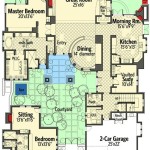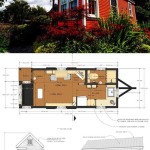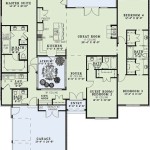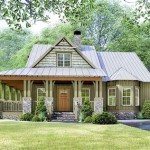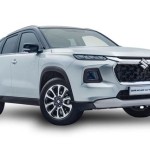Tudor Style Cottage House Plans: A Timeless Architectural Legacy
Tudor style cottage house plans exemplify the architectural charm and grandeur of the Tudor era in England (1485-1603). These plans feature distinctive design elements that have captivated homeowners and architects alike for centuries, from steeply pitched roofs to decorative half-timbering. One notable example of a Tudor-style cottage is Anne Hathaway’s Cottage in Stratford-upon-Avon, which was the childhood home of William Shakespeare’s wife.
In the following sections, we will delve into the key characteristics and design principles of Tudor style cottage house plans, exploring their unique features and discussing the factors to consider when building a home inspired by this timeless architectural style.
Essential Features of Tudor Style Cottage House Plans
- Steeply pitched roofs
- Decorative half-timbering
- Arched doorways and windows
- Diamond-shaped leaded glass panes
- Massive chimneys
- Gabled dormers
- Bay windows
- Intricate brickwork
- Asymmetrical facades
These distinctive characteristics blend harmoniously to create the quintessential Tudor style cottage, offering a timeless and captivating architectural aesthetic.
Steeply pitched roofs
Steeply pitched roofs are a defining characteristic of Tudor style cottage house plans. These roofs serve both functional and aesthetic purposes. Their steep slope allows for efficient rainwater runoff, preventing water damage to the structure. Additionally, the high roofline creates a sense of spaciousness and grandeur within the home.
Tudor roofs are typically constructed using a combination of materials, including slate, tiles, and thatch. Slate roofs are known for their durability and longevity, while tile roofs offer a wide range of color and texture options. Thatch roofs, made from natural materials like straw or reeds, provide a charming and rustic aesthetic.
The steep pitch of Tudor roofs also allows for the incorporation of gabled dormers, which are small, windowed structures that project from the roof. Dormers provide additional natural light and ventilation to the upper floors of the home. They can also enhance the aesthetic appeal of the roofline, adding visual interest and depth.
Overall, the steeply pitched roofs of Tudor style cottage house plans are not only a functional necessity but also a key design element that contributes to the home’s unique and timeless character.
Decorative half-timbering
Decorative half-timbering is a signature feature of Tudor style cottage house plans. It involves the use of exposed wooden beams to create a grid-like pattern on the exterior walls of the home. This technique not only adds visual interest but also serves a structural purpose.
The half-timbering is typically constructed using oak or chestnut beams, which are joined together using mortise and tenon joints. These joints are both strong and flexible, allowing the structure to withstand the test of time. The beams are then infilled with a variety of materials, including wattle and daub, brick, or stone.
Wattle and daub is a traditional infill material made from woven sticks and clay. It is applied to the gaps between the beams, creating a weather-resistant and insulating layer. Brick and stone infill are also common, providing a more durable and fire-resistant exterior.
The decorative half-timbering on Tudor style cottage house plans can vary in complexity and design. Some homes feature simple grid patterns, while others incorporate elaborate carvings and decorative details. The color of the beams and infill materials can also be customized to create a unique and personalized look.
In addition to its aesthetic appeal, decorative half-timbering also provides structural support to the home. The beams help to distribute the weight of the roof and walls, ensuring the stability and longevity of the structure.
Arched doorways and windows
Arched doorways and windows are another distinctive feature of Tudor style cottage house plans. These elegant and graceful openings add a touch of grandeur and sophistication to the home’s exterior.
Tudor arches are typically semi-circular in shape, with a keystone at the apex. The arches are often constructed using stone or brick, and they can be either plain or decorated with intricate carvings or moldings.
Arched doorways provide a grand and welcoming entrance to the home. They are often flanked by sidelights, which are narrow windows that allow natural light to enter the foyer. Arched windows, on the other hand, add a touch of elegance and charm to the exterior walls. They can be used to create a variety of window shapes, including casement windows, bay windows, and oriel windows.
In addition to their aesthetic appeal, arched doorways and windows also serve a practical purpose. The arches help to distribute the weight of the structure above them, reducing the need for additional support beams. They also provide increased headroom, making the home feel more spacious and inviting.
Overall, arched doorways and windows are an essential design element of Tudor style cottage house plans. They add a touch of grandeur, elegance, and practicality to the home, creating a timeless and captivating architectural style.
Diamond-shaped leaded glass panes
Diamond-shaped leaded glass panes are a hallmark of Tudor style cottage house plans. These panes are created by cutting glass into diamond shapes and joining them together using lead came, which is a thin strip of lead.
Leaded glass windows have been used in homes for centuries, but they became particularly popular during the Tudor period. Tudor leaded glass panes were often decorated with intricate patterns and designs, adding a touch of elegance and sophistication to the home.
In addition to their aesthetic appeal, leaded glass panes also provide a number of practical benefits. The lead came helps to strengthen the glass, making it more resistant to breakage. Leaded glass windows are also more energy-efficient than traditional windows, as the lead came helps to seal the gaps between the panes.
Diamond-shaped leaded glass panes are a beautiful and timeless design element that adds a touch of Tudor charm to any home. They are a perfect choice for homeowners who want to create a home with a unique and historical character.
Benefits of diamond-shaped leaded glass panes:
- Increased strength and durability
- Improved energy efficiency
- Enhanced privacy
- Reduced noise pollution
- Timeless aesthetic appeal
Massive chimneys
Massive chimneys are a defining characteristic of Tudor style cottage house plans. These chimneys are not only functional, providing a means for expelling smoke and fumes from the home, but they also serve as a striking architectural feature.
Tudor chimneys are typically constructed using brick or stone, and they often feature intricate detailing and decorative elements. The chimneys are typically square or rectangular in shape, and they can rise to heights of up to 60 feet or more. Some Tudor chimneys are even topped with decorative finials or caps.
In addition to their visual appeal, massive chimneys also play an important structural role in Tudor style cottage house plans. The chimneys help to support the weight of the roof, and they can also help to stabilize the structure in high winds.
Overall, massive chimneys are an essential design element of Tudor style cottage house plans. They provide a functional means for expelling smoke and fumes from the home, and they also serve as a striking architectural feature that adds to the home’s overall charm and character.
Chimney stacks
Tudor chimneys often feature multiple chimney stacks, which are vertical extensions of the chimney that rise above the roofline. Chimney stacks help to improve the draft of the chimney, ensuring that smoke and fumes are efficiently expelled from the home.
Chimney stacks can also be used to create a variety of decorative effects. Some Tudor chimneys feature simple, unadorned chimney stacks, while others are decorated with intricate carvings or moldings.
Chimney pots
Chimney pots are another common feature of Tudor style cottage house plans. Chimney pots are placed on top of the chimney stacks to help prevent downdrafts and to improve the chimney’s draft.
Chimney pots can be made from a variety of materials, including clay, terracotta, and metal. They are often decorated with intricate designs or patterns, adding a touch of charm and character to the home’s exterior.
Gabled dormers
Gabled dormers are a common feature of Tudor style cottage house plans. These dormers are small, windowed structures that project from the roof of the home, typically on the upper floors. Gabled dormers add additional natural light and ventilation to the upper floors of the home, and they can also enhance the home’s overall aesthetic appeal.
- Increased natural light: Gabled dormers allow natural light to enter the upper floors of the home, making the rooms feel more spacious and inviting. The windows in the dormers can be opened to provide ventilation, creating a more comfortable living environment.
- Improved ventilation: The windows in gabled dormers can be opened to allow air to circulate throughout the home. This helps to improve the air quality and reduce the risk of moisture buildup, which can lead to mold and mildew.
- Enhanced aesthetic appeal: Gabled dormers add a touch of charm and character to Tudor style cottage house plans. The dormers can be decorated with a variety of architectural details, such as decorative shingles, half-timbering, or carved bargeboards.
- Increased headroom: Gabled dormers provide additional headroom in the upper floors of the home. This makes the rooms feel more spacious and comfortable, and it can also make it easier to move around.
Overall, gabled dormers are a functional and attractive addition to Tudor style cottage house plans. They provide increased natural light, improved ventilation, enhanced aesthetic appeal, and increased headroom, making the home more comfortable and enjoyable to live in.
Bay windows
Bay windows are a type of window that projects outward from the wall of a building, creating a small, enclosed space. Bay windows are often used in Tudor style cottage house plans to add character and charm to the home’s exterior. They can also provide increased natural light and ventilation to the interior of the home.
Bay windows are typically constructed using a combination of materials, including wood, stone, and glass. The windows are often divided into multiple panes, and they can be either fixed or operable. Operable bay windows can be opened to provide ventilation and to allow occupants to enjoy the outdoors from the comfort of their home.
Bay windows can be customized to fit the specific needs and preferences of the homeowner. They can be designed in a variety of shapes and sizes, and they can be decorated with a variety of architectural details, such as decorative moldings, stained glass, and window boxes.
Overall, bay windows are a beautiful and functional addition to Tudor style cottage house plans. They provide increased natural light, improved ventilation, and enhanced aesthetic appeal, making the home more comfortable and enjoyable to live in.
Benefits of bay windows
- Increased natural light: Bay windows allow natural light to enter the home from multiple directions, making the rooms feel more spacious and inviting. The windows can be opened to provide ventilation, creating a more comfortable living environment.
- Improved ventilation: The windows in bay windows can be opened to allow air to circulate throughout the home. This helps to improve the air quality and reduce the risk of moisture buildup, which can lead to mold and mildew.
- Enhanced aesthetic appeal: Bay windows add a touch of charm and character to Tudor style cottage house plans. The windows can be decorated with a variety of architectural details, such as decorative moldings, stained glass, and window boxes.
- Increased space: Bay windows project outward from the wall of the building, creating a small, enclosed space that can be used for a variety of purposes, such as a reading nook, a breakfast area, or a home office.
Types of bay windows
There are many different types of bay windows, each with its own unique shape and style. Some of the most common types of bay windows include:
- Box bay windows: Box bay windows are the most common type of bay window. They are rectangular in shape and project outward from the wall of the building in a straight line.
- Bow bay windows: Bow bay windows are curved in shape and project outward from the wall of the building in a gentle.
- Oriel bay windows: Oriel bay windows are similar to box bay windows, but they are supported by brackets or corbels instead of being attached to the wall of the building.
- Turret bay windows: Turret bay windows are circular or polygonal in shape and project outward from the wall of the building in a tower-like fashion.
Intricate brickwork
Intricate brickwork is a hallmark of Tudor style cottage house plans. Tudor brickwork is characterized by its use of decorative patterns and textures, which add a touch of elegance and sophistication to the home’s exterior. Tudor bricklayers were skilled craftsmen, and they used a variety of techniques to create beautiful and unique brickwork patterns.
One of the most common Tudor brickwork patterns is the herringbone pattern. This pattern is created by laying bricks in a zigzag pattern, which resembles the bones of a herring fish. The herringbone pattern can be used to create a variety of different looks, depending on the size and color of the bricks used.
Another popular Tudor brickwork pattern is the diaper pattern. This pattern is created by laying bricks in a diamond-shaped grid. The diaper pattern can be used to create a variety of different looks, depending on the size and color of the bricks used. It can also be combined with other patterns, such as the herringbone pattern, to create even more complex and interesting designs.
Tudor brickwork is not limited to these two patterns. Tudor bricklayers also used a variety of other patterns, such as the basketweave pattern, the star pattern, and the compass pattern. The choice of pattern was often dictated by the region of the country in which the home was being built. For example, the herringbone pattern was more common in the north of England, while the diaper pattern was more common in the south.
In addition to decorative patterns, Tudor brickwork also often features intricate textures. These textures were created by using a variety of techniques, such as brushing, combing, and stamping. The textures added depth and interest to the brickwork, and they helped to create a unique and distinctive look.
Overall, intricate brickwork is an essential design element of Tudor style cottage house plans. It adds a touch of elegance and sophistication to the home’s exterior, and it helps to create a unique and distinctive look.
Asymmetrical facades
Asymmetrical facades are a defining characteristic of Tudor style cottage house plans. This means that the front of the home is not symmetrical, but rather features a variety of different shapes and sizes of windows, doors, and other architectural elements. The asymmetrical facade adds a touch of visual interest and charm to the home.
One of the most common ways to create an asymmetrical facade is to use a variety of different window shapes and sizes. For example, the front of the home may feature a large bay window on one side and a smaller casement window on the other side. The windows may also be placed at different heights, which adds to the asymmetry of the facade.
Another way to create an asymmetrical facade is to use a variety of different door shapes and sizes. For example, the front of the home may feature a large double door on one side and a smaller single door on the other side. The doors may also be placed at different heights, which adds to the asymmetry of the facade.
In addition to windows and doors, other architectural elements can also be used to create an asymmetrical facade. For example, the front of the home may feature a porch on one side and a gable on the other side. The porch and gable may also be different sizes, which adds to the asymmetry of the facade.
Overall, asymmetrical facades are a key design element of Tudor style cottage house plans. They add a touch of visual interest and charm to the home, and they help to create a unique and distinctive look.










Related Posts

